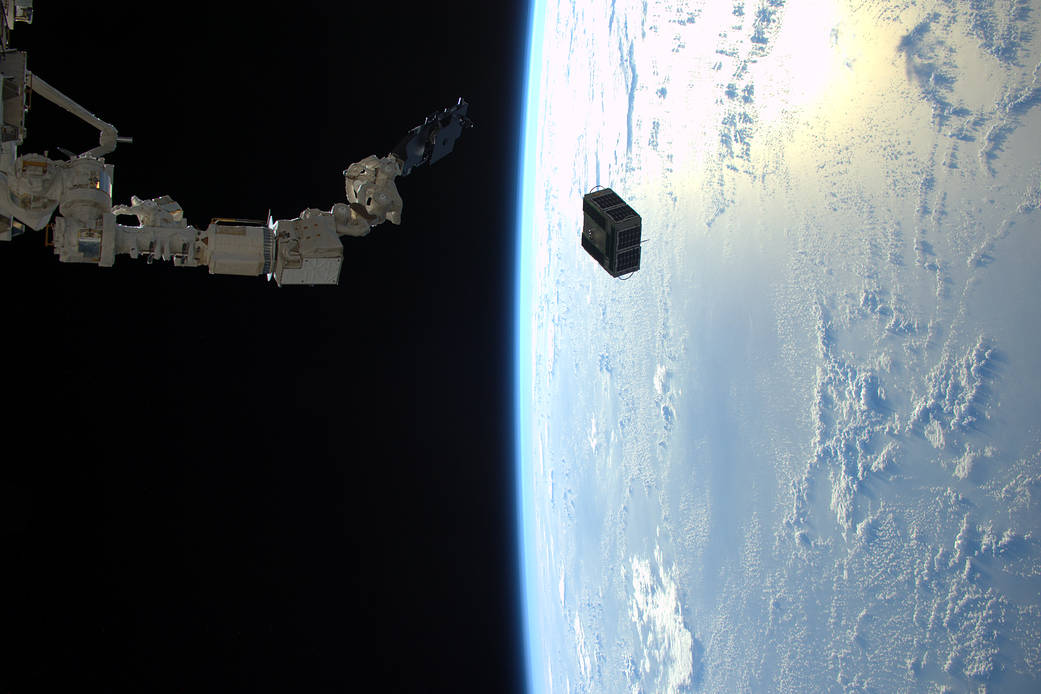
Expedition 46 flight engineer Tim Peake of ESA captured this photo on Jan. 29, 2016 from the International Space Station, as the robotic arm in Japan’s Kibo laboratory successfully deployed two combined satellites from Texas universities. The pair of satellites — AggieSat4 built by Texas A&M University students, and BEVO-2 built by University of Texas students — together form the Low Earth Orbiting Navigation Experiment for Spacecraft Testing Autonomous Rendezvous and Docking (LONESTAR) investigation.
The satellites will demonstrate communication protocols between them and with ground stations, as well as systems that allow the satellites to navigate through space and relative to each other and to orient themselves in three dimensions. Flight demonstration of these abilities, necessary for unmanned craft to be able to rendezvous and dock in space without direct human intervention, will contribute to future satellite missions as well.
Image Credit: ESA/NASA


























